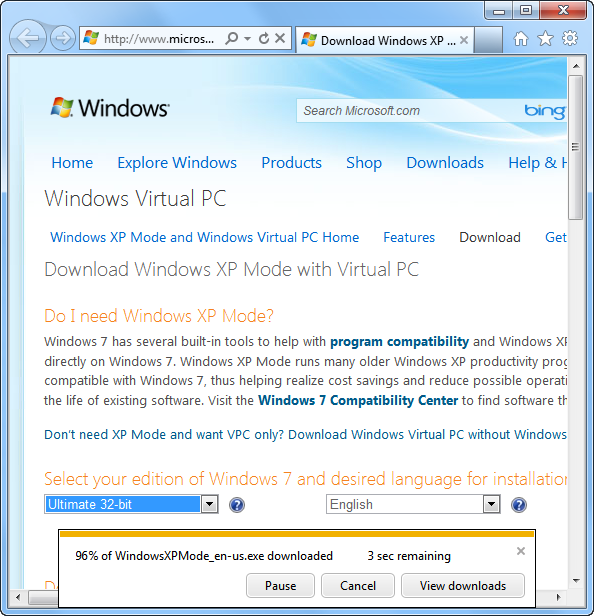

- #Windows xp vmx file download windows 10#
- #Windows xp vmx file download software#
- #Windows xp vmx file download download#
- #Windows xp vmx file download windows#
Open Hyper-V, make a new VM, add that previous VHD file (see procedure).Scroll down select and extract the file named VirtualXPVHD. Use 7ZIP to open the xpm file that you extracted in the previous step.Open Sources folder in 7ZIP window, extract xpm file. Unzip that exe file with 7ZIP by dragging and dropping it into the 7ZIP window. Open the folder containing the executable file (e.g.
#Windows xp vmx file download windows#
Windows 3.Download a Windows XP Mode executable file from Microsoft's Windows XP Mode site. Generally, we have found that most of these people are Google Chrome users.
#Windows xp vmx file download windows 10#
Our data shows that VMX files are frequently utilized by PC users in United States and popular on the Windows 10 platform.
#Windows xp vmx file download software#
Windows 3.1 (Gateway 2000 OEM - Nomad 486) (3.5-1.44mb) VMware Fusion is the primary software program that utilizes the VMware Configuration File file, originally developed by VMware.
#Windows xp vmx file download download#
Product type OS Vendor Microsoft Release date Sat End of life date Sat Minimum CPU 286 or higher Minimum RAM 2MB Minimum free disk space 20MB User interface GUI Platform Windows Download count 774 (403 for release) Downloads Download name No 8086 or 8088 systems will run Windows 3.1 Real Mode is no longer supported in Windows 3.1 requiring at least an Intel 80286 or equivalent to run. To Install: Windows 3.1 requires an installation of either MS-DOS or PC-DOS and we recommend using MS-DOS 6.22 if you are unsure of a version. On 386 systems and greater you can run a limited subset of 32-bit Windows applications (mostly those for Windows NT 3.5 and 95) with the Win32s (Win32 subset) patch. The only difference from 3.1 was additional support for Chinese characters and was released in late 1993. Windows 3.2 was a Chinese language specific release. Purple was replaced with blue and the boot screen was overhauled to the modern 3.1 variant. The final beta was compiled on Decemand expects a BIOS date of the 18th or later. Common supported cards include Adlib and Sound Blaster 16.īETA During development Windows 3.1 was under the development codename Janus and 3 prerelease versions have surfaced, two beta candidates and a release candidate. In Windows 3.0 this was provided by a Multimedia PC add-on which usually came with new Multimedia PCs, sound cards and CD-ROM drives of the day. Multimedia support was now fully integrated along with the expandable Control Panel into Windows 3.1. TrueType survives today along with its close cousin OpenType. With TrueType users could finally have a good grasp that what was shown on the screen would be what was printed without blocky outlines. Windows 3.1 also came with support for TrueType fonts which provide more realistic font rendering as they are outline fonts that can scale to any point size. Write, Paintbrush and the new Object Packager have support for this technology which remains with us today in Windows 8.

The File Manager was completely revamped and a revamped hypertext help system was introduced.Īpplications could talk to each other not only through the DDE (Dynamic Data Exchange) protocol, also used by OS/2, but also by the new Windows-only OLE protocol which allows for applications to share any type of object more seamlessly. Among the changes in Windows 3.1 include a drop of real mode support (see more below), the removal of the Reversi game, updated icons with richer colors, an improved setup process with better hardware detection, and the introduction of batch install. Microsoft Windows 3.1 was an evolution to Windows 3.0 and undoubtably the most popular, poster child version in the Windows 3.x series.


 0 kommentar(er)
0 kommentar(er)
